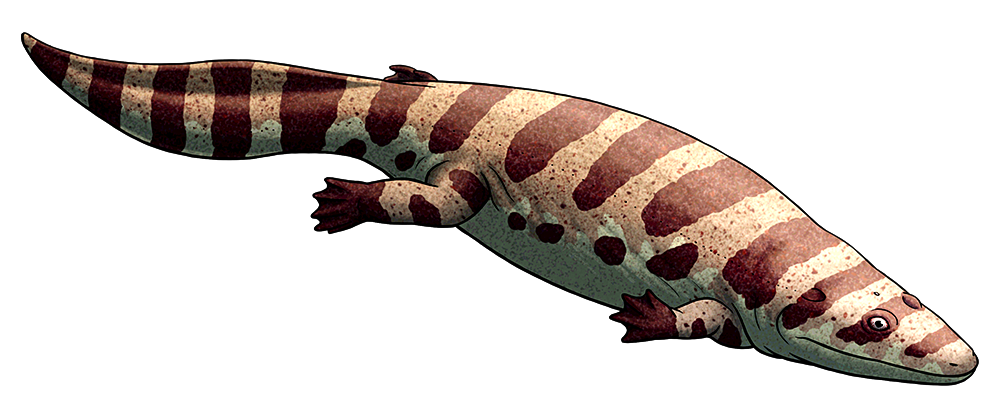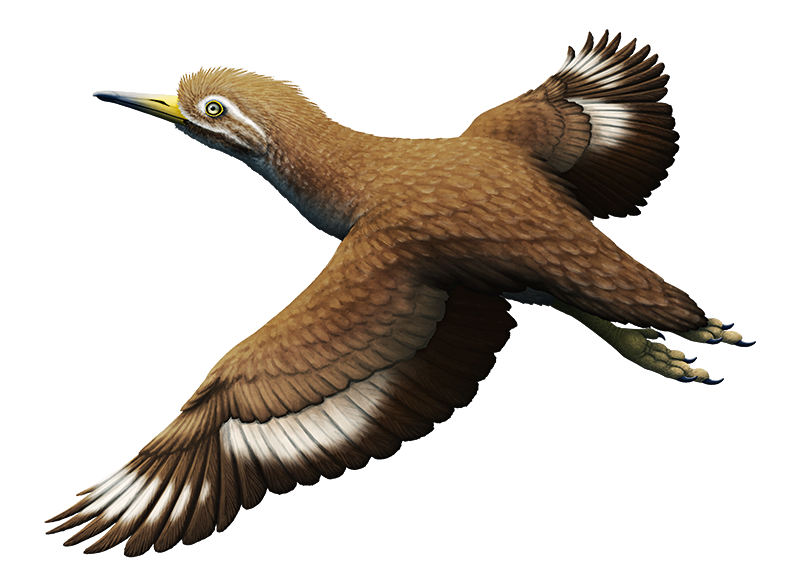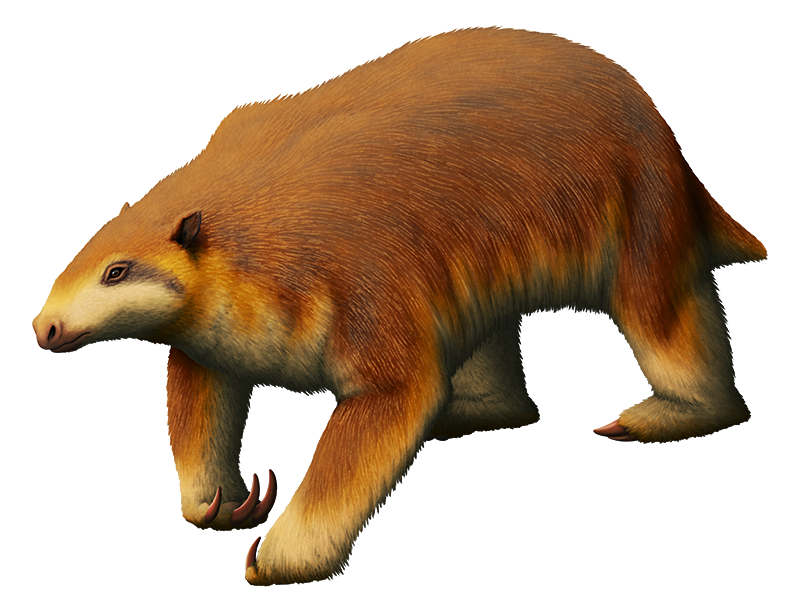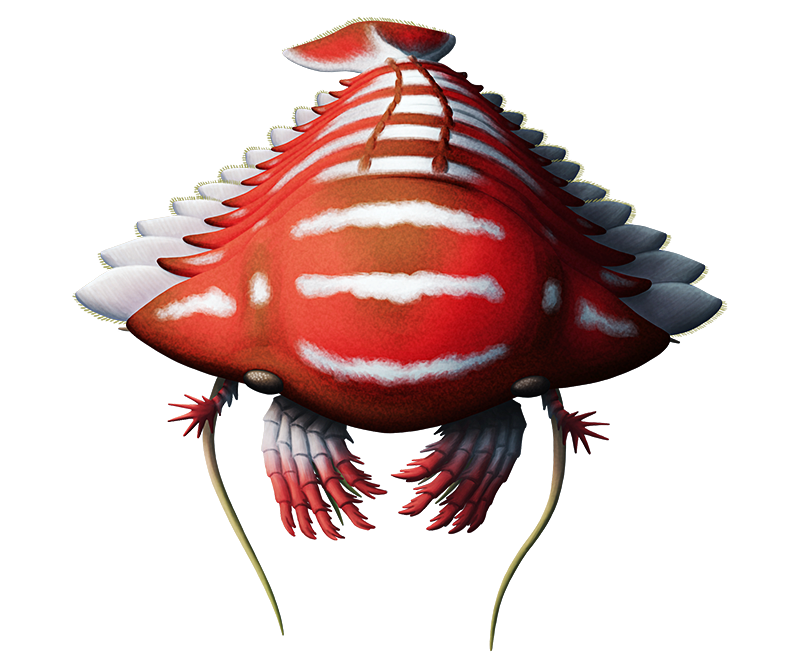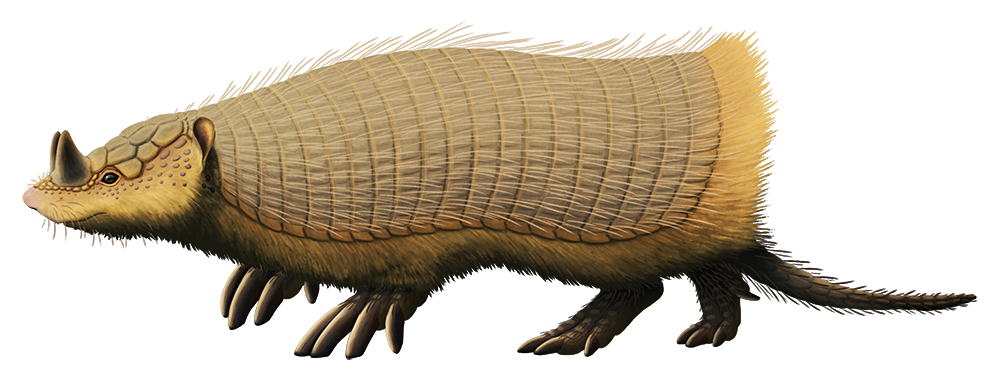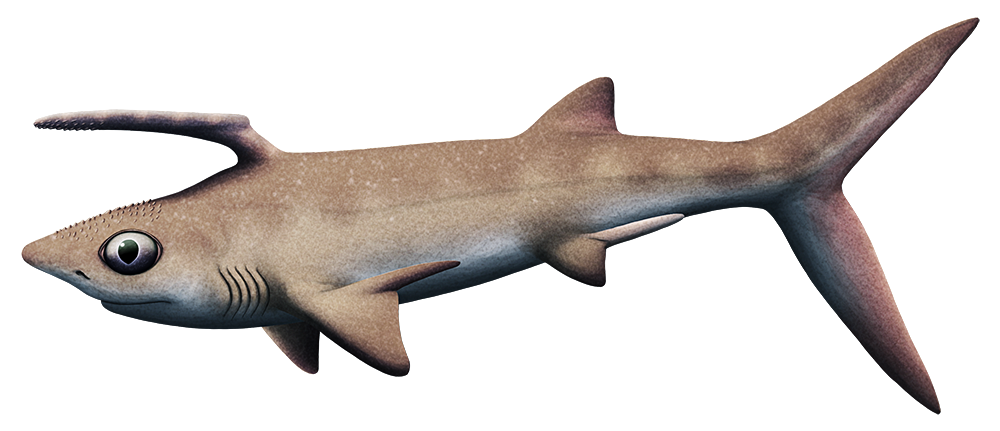Falcatus falcatus, a 30cm long (12″) cartilaginous fish from the mid-Carboniferous of Montana, USA (~326-318 mya).
Although it looked very shark-like it was actually much more closely related to modern chimaeras, and its most distinctive feature was the forward-pointing “unicorn horn” spine just behind its head – a sexually dimorphic structure formed from a highly modified dorsal fin, found only on mature males.
The spine’s function is unknown for certain, but it may have been a sort of clasper involved in courtship and mating, since one fossil seems to preserve a female in the act of biting onto it. Some of its close relatives like Damocles and Stethacanthus also had similarly weird dorsal fins, so whatever these fish were actually doing with these structures it must have been a fairly successful strategy.
Falcatus lived out in the open ocean, with proportionally big eyes giving it good vision in deep dark water, and its large symmetrical tail fin suggests it was a fast maneuverable swimmer that actively chased after small prey. Numerous fossils have been found together, which may also indicate schooling behavior.
Although definite fossils of falcatids are only known from the Carboniferous, recently there’s been some possible evidence of them surviving for much much longer. A few isolated fossil teeth from Europe suggest that some of these fish may have persisted for at least another 180 million years into the Early Cretaceous, living in isolated deep water refugia environments in a similar situation to the modern coelacanth – making them fossils of what would have been “living fossils” at the time!

